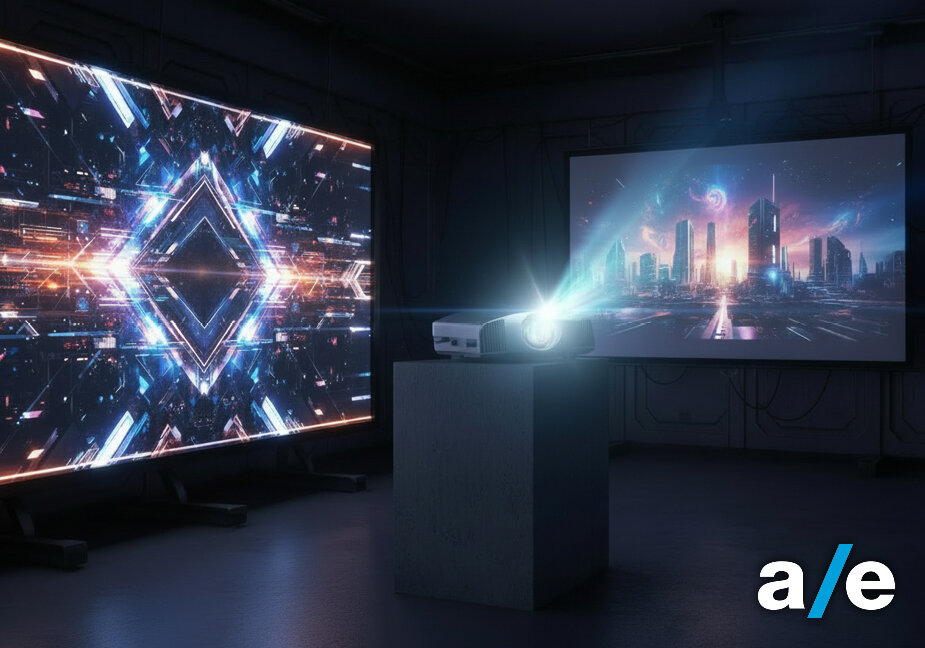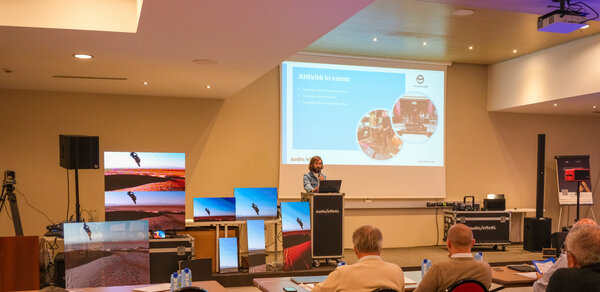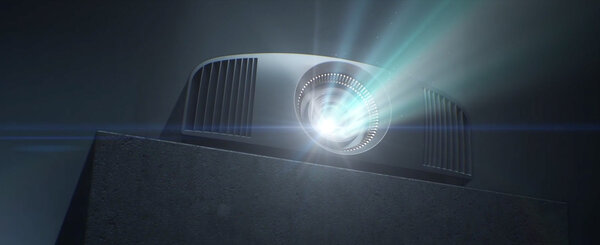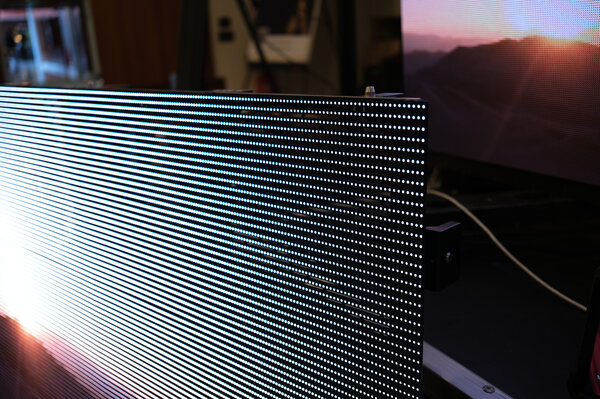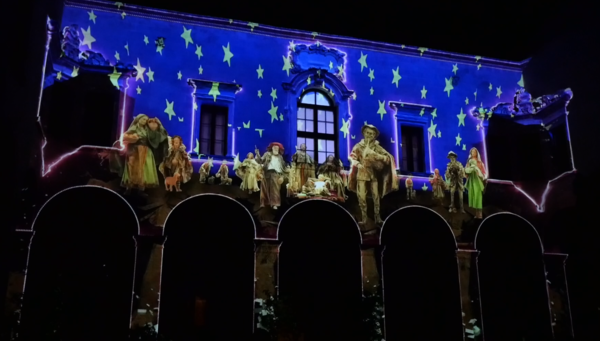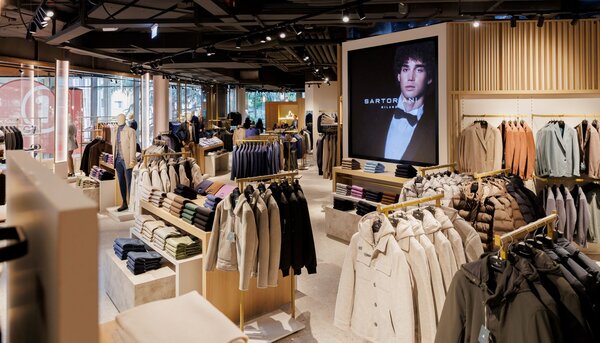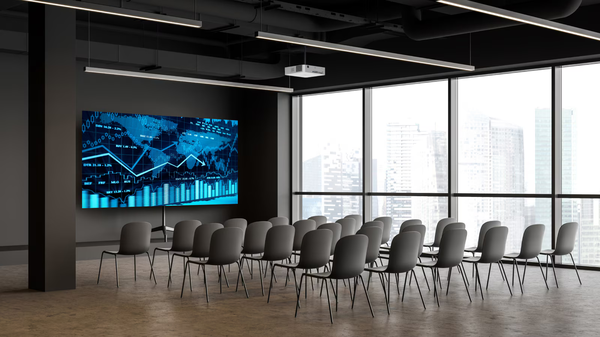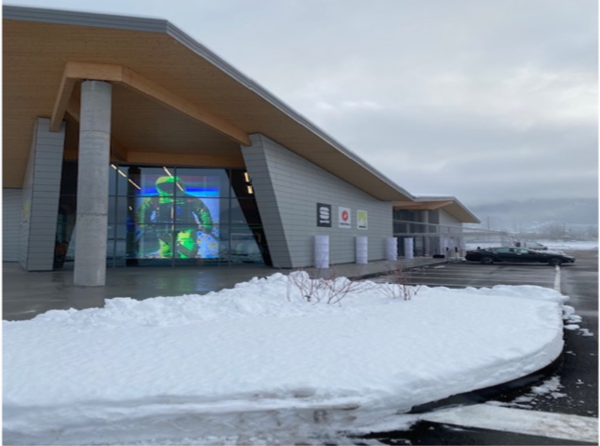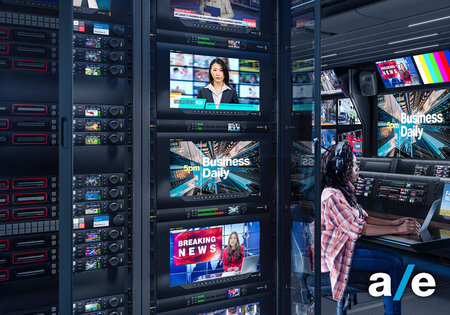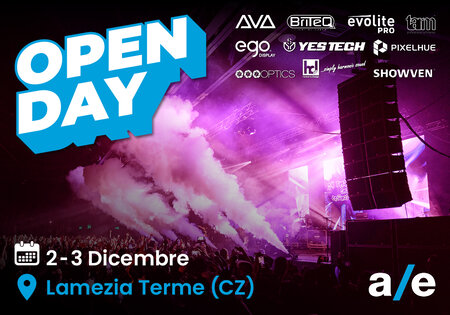Video projectors and LED walls are now widely adopted across events, visual communication and professional installations. But which one delivers better performance, greater versatility and better cost-effectiveness? LED walls are becoming increasingly accessible and high-performing, while projectors continue to evolve with laser light sources and higher resolutions. Designers today are often faced with a choice between mobile, lightweight solutions (projectors) and high-brightness permanent/semi-permanent systems (LED walls). These topics, and more, are explored in the following article.
Over recent years, everything related to image display both static and moving has undergone a major transformation. Projectors, long-established in conference rooms, cinemas and educational environments, now find themselves competing sometimes even in terms of cost with LED walls. The comparison between these two technologies is technical, but also aesthetic, functional and economic. Which solution best serves today’s needs? The answer depends on many factors: environment, budget, content type and communication objectives.
Technology and intended use
As we know, video projectors are optical devices that project images onto a screen using light sources such as lamps, LEDs or lasers. They may rely on DLP, LCD or LCoS imaging technologies, each with its own strengths and limitations, and are valued for portability and the ability to cover large surfaces from a single projection point.
LED walls, on the other hand, stand out for their modularity. They consist of LED panels forming a continuous, high-brightness surface capable of delivering rich resolution, vivid colour and excellent visibility even in well-lit environments or outdoors. While projectors require projection distance and more controlled ambient lighting, LED walls maintain sharp, stable imagery under a wide range of lighting conditions.
Brightness and visual performance
One of the most critical factors when choosing between projectors and LED walls is visual performance under varying environmental light.
LED walls typically deliver higher brightness often between 800 and 6000 nit making them suitable for outdoor use, storefronts exposed to direct daylight and brightly lit exhibition spaces.
Projectors, even high-end laser models, struggle in these conditions and often require partial or full darkening to ensure optimal viewing.
It is worth clarifying this further: while a projector’s nominal lumen rating may exceed that of an LED wall, real-world visibility in bright environments often favours LED technology. The reason is direct emission. LED walls produce high contrast, uniform output, while projectors must send light across a space, reflect it off a surface and then to the viewer introducing loss, reflections and interference. A 10,000-lumen projector may seem powerful, but a 2,000–5,000 nit LED wall (such as Yes Tech MG9 P3.9 or EGO Display EasySQUARE) delivers far more readable images under sunlight thanks to direct light emission.
In terms of contrast and colour, LED walls naturally offer deeper blacks and richer saturation through direct-emission RGB technology and high contrast ratios. Projectors can perform well chromatically, but typically lose detail in darker scenes and are more affected by reflections and light dispersion. Sharpness, too, is more consistent across an LED wall, whereas projectors may suffer edge softness depending on optics quality or uneven projection surfaces.
In bright or visually demanding environments, LED walls are currently the stronger performer. Projectors remain fully valid where lighting is controlled.
Size and flexibility
Choosing between projectors and LED walls also involves spatial management and installation flexibility. Projectors excel in adaptability: they can be used on walls, building façades, mobile screens, scenic backdrops and even irregular or curved surfaces.
A single device can cover very large areas, provided that the projection distance is appropriate and environmental conditions are favourable.
Although more recent solutions such as LED walls have introduced new possibilities and enhanced the viewing experience, projectors still play an important role today, particularly in multimedia museum installations. The ability to display very large images, combined with the reliability of latest-generation laser models, delivers a highly impactful experience for visitors, bringing hundreds of small details to monumental scale.
LED walls, by contrast, offer modular construction, allowing screens of virtually any size or format to be created including curved layouts, angle configurations and unique geometric designs such as Yes Tech’s special-shape modules. This makes them ideal for permanent installations, retail windows, stage environments and any context where a solid, visually dominant structure is required.
In summary, from an installation standpoint, projectors are better suited to temporary setups such as touring events, presentations or mobile configurations. LED walls, on the other hand, require more complex support structures and cabling but provide stable, long-lasting visual performance, making them a strong choice for fixed or long-term installations.
Projectors excel in mobility and adaptability, while LED walls take the lead whenever visual impact and structural solidity are key requirements.
Initial investment and maintenance
Now to cost-both upfront and over time.
Even high-end laser projectors generally cost less to purchase than LED walls for equivalent coverage area, making them attractive for temporary events, mobile installations or lower-budget environments. However, they do require periodic maintenance lamp replacement (for non-laser models), filter cleaning and optical calibration. Power consumption also varies considerably depending on technology and brightness. That said, modern laser projectors often operate for 20,000 hours or more without maintenance such as new-generation Sony 3LCD laser models.
LED walls, meanwhile, involve a higher initial investment, especially for large formats or fine-pixel-pitch configurations. However, they offer longer operational life, minimal servicing, and stable energy consumption thanks to efficient LED modules and the absence of quickly wearing components. Regarding cost, it is worth noting that in many cases up to 80–90% products like EGO Display EasyHP can match the complete installed cost of a projector + projection screen system.
In short, projectors are usually cheaper to purchase but more expensive to maintain (especially lamp-based models), whereas LED walls require a higher initial spend but deliver long-term reliability and operational continuity. The right choice depends on usage frequency, installation duration and available resources.
Practical applications and future outlook
As noted, practical applications vary significantly by context. Projectors remain prevalent in artistic scenography and especially video mapping, where projection onto irregular surfaces or complex architecture creates immersive effects not easily replicated with LED modules. In live events, however, LED walls are often preferred for their brightness, robustness and visual impact especially outdoors or under strong lighting.
A key factor: projection does not physically change the surface. The building façade remains intact, free of visible structures or cabling. Once powered down, the surface returns to its natural state an essential consideration where historical preservation or architectural integrity is required.
LED walls are physical objects permanent or semi-permanent. When turned off, they remain visible and may alter the aesthetic character of a façade. Integration is possible, but their presence is always noticeable.
In exhibition environments, LED walls dominate due to high-resolution dynamic content and the flexibility to build curved or translucent structures.
In retail, transparent LED units are transforming storefronts by enabling communication without blocking visibility while traditional LED displays continue to spread widely.
Projectors, though less common, still create atmospheric, immersive visuals indoors.
In museums, projectors are often preferred for adaptable layout requirements and narrative environments, while LED walls serve interactive exhibits and high-traffic digital signage.
LED walls, on the other hand, are used for interactive exhibits and digital signage, particularly in high-traffic areas.
In the corporate sector, video projectors remain widely adopted for presentations, training sessions and flexible environments, thanks to their cost-effectiveness and ease of use.
LED walls are used in conference rooms, reception areas and showrooms, where clear, impactful communication is essential.
Looking ahead, both technologies are advancing rapidly. Video projectors have now almost entirely moved away from traditional lamp sources in favour of laser engines, which offer longer lifespan, reduced maintenance and more consistent brightness over time.
LED walls, for their part, are experiencing exponential growth across all application sectors. Increasingly lightweight and flexible modules allow for creative installations on non-linear surfaces, expanding expressive potential in scenic, architectural and commercial design. Transparent LED walls enable glass surfaces to become communication tools while maintaining good through-visibility.
In conclusion, the choice between video projectors and LED walls is no longer dictated solely by technology, but by the vision one intends to convey. While projectors especially high-brightness models above 10,000 ANSI lumens still hold relevance in specific scenarios, LED walls are emerging as the most coherent choice for those aiming to impress, engage and innovate in a landscape where images are expected to be omnipresent, adaptable and interactive. Once regarded as premium solutions, they are becoming increasingly accessible, with pricing gradually aligning closer to projection systems. They deliver unmatched brightness, strong visual presence and installation flexibility, making them ideal for dynamic environments and high-impact communication.
Wanto to learn more?
Email us at international@audioeffetti.it

 English
English  French
French
